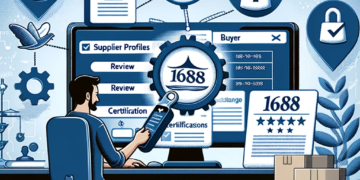The healthcare sector is undergoing a phenomenal transformation under technology and a fluxing demand for efficient, personalized, and secure care. Pre-designed solutions often fail to meet the unique needs of healthcare providers, patients, and administrators. Custom software for healthcare, on the other hand, provides a modus operandi specific to the solution, allowing operational efficiencies with a consequent improvement in patient outcomes.
The following is a discussion on how custom healthcare software solves a real-world challenge and changes the way of working in the industry.
Custom Software for Healthcare
Custom software for healthcare means solutions designed to meet the specific needs of medical facilities, clinics, hospitals, and other healthcare organizations. Unlike generic systems, they are built with the medical provider workers’ workflows, compliance requirements, and goals in mind.
Customized solutions across the gamut-from electronic health records (EHRs), patient management tools, and telemedicine platforms to billing software organizations achieve accuracy, communication, and overall patient care.
Fragmented Systems and Data Silos
The Problem:
Multiple software systems that do not communicate with one another are rampant in healthcare facilities. This results in fragmentation of patient data, an increase in administrative work, and a greater risk of errors.
The Solution:
Custom software can integrate disparate systems into a single, unified platform. For example, a hospital can develop a single-dashboard solution that integrates patient records, lab results, and appointment schedules. This means that the medical personnel has access to all complete and up-to-date information in real-time, thereby supporting better decision-making and coordination.
Regulatory Compliance and Data Security
The Problem:
Healthcare providers need to follow strict regulations, such as HIPAA (Health Insurance Portability and Accountability Act) in America, GDPR in Europe, or local health laws elsewhere, while basic features are to help implement data security, consent, and the right to privacy of patients.
The Solution:
Custom software for healthcare is built with compliance at its forefront. Security functions like multi-factor authentication, encrypted database, and user access control may be stipulated and developed in line with industry standardisation. This software is updated regularly and audited for compliance, creating an avenue to mitigate legal risks and reassure patients through confidence.
Inefficient Experiences for Patients
The Problem:
Patients currently suffer from wait times, lack communication, and have restricted access to information. In an age where everything is digitised, patients expect more transparency and accessibility in taking care of their health.
The Solution:
Custom healthcare applications and portals can change the experience altogether. Features such as online appointments, digital check-in, virtual consultation, or online access to medical records can boost the efficiency with which patients manage their care. This can also extend to solutions like home care software, for example, which can increase coordination and communication for patients receiving care outside traditional clinical settings. Custom solutions can also be used for multilingual applications or accessibility, ensuring inclusivity across all demographics.
Telehealth and Remote Monitoring
The Problem:
The recent pandemic has helped encourage the uptake of telemedicine; however, many solutions could not provide realistic user scenarios, enhancing connectivity issues, poor user experience, and functionality limits.
The Solution:
Telehealth-specific platforms can be developed using custom-developed modules that meet the exact clinical requirements. Such systems comprise high-quality video, secure messaging, remote patient monitoring tools, and wearables integration. They also support custom workflows such as virtual waiting rooms or automated follow-ups, ensuring continuity of care beyond the clinic walls.
Scalable and Adaptable
The Problem:
As generic software grows or changes services, most healthcare providers experience trouble scaling this type of software. Most of the time, adding a feature or integrating it into new systems is expensive and time-consuming.
The Solution:
Custom software for healthcare is built with flexibility and scalability in mind. Depending on practice growth and sometimes different regulations that might change, the custom software could grow with it. This future-proofing allows healthcare organisations to remain agile and efficient without an overhaul of their system too frequently.
Real-World Implications: In This Case
Imagine a mid-sized city hospital dealing with long onboarding processes for patients, slow test results, and communication breakdowns between the various departments. The hospital implemented a custom designing the patient management system, resulting in a 30% decrease in administrative workload, a 25% improvement in the turnaround time for appointments, and increased patient satisfaction.
The example shows that custom software for healthcare does not simply optimise processes; it is a direct contributor to improving health outcomes.
Conclusion
The rising demand for personalized, safe, and efficient healthcare solutions is overstated. Off-the-shelf software solutions may prove practical, but very few ever deliver the breadth and flexibility required to tackle the multifaceted issues faced by contemporary healthcare providers. Companies have to invest in custom-built software for healthcare, providing better workflows, better patient outcomes, and an added edge in an increasingly digital and data-driven context.
As technology grows, the customization of digital tools tailored to resolve today’s challenges but flexible enough to be adapted for tomorrow’s necessities should be the focus of the healthcare industry. The right software can link the vantage of operational excellence with the actual concept of patient-centered care.












































































